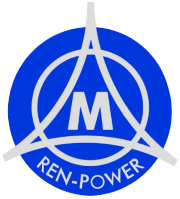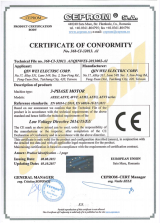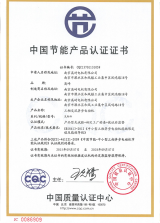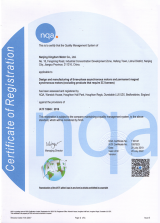Nanjing Kingdom-Motor Electric Corp.
High-calibre specialised manufacturer of electric motors
Nanjing Kingdom-Motor Electric Corp. was established in October 2013, with legal representative Xu Rongfeng. The company has registered capital of 3.5 million US dollars, covers an area of 35 mu, plant area of 21,000 square meters, and currently has 192 employees. The head office is Taiwan Qinwei Electric Machinery Co., LTD., located in Taichung City, Taiwan (established in 1987).
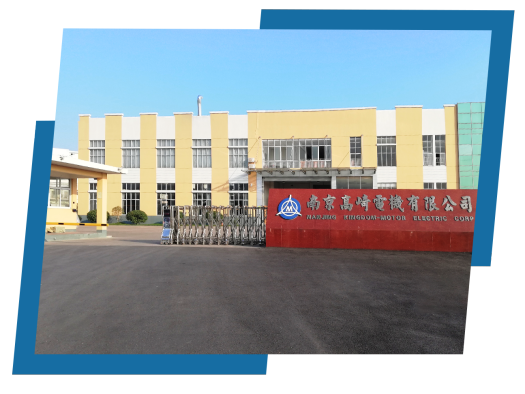
products
Company From All Around The World trust on Pabrica for awesome project
Let's start your project to be realize.
We planted our roots with a commitment to earning your trust and protecting lives, property, and prestige.
Update
Latest News & Article

What is an induction motor (motor)?
Induction motors, also known as induction motors in Taiwan and Hong Kong, use the electromagnetic induction between the stator and the rotor to induce current in the rotor to realize the conversion of mechanical energy to electrical energy. Induction motors are also widely used. However, in a general sense, they are only used as motors, and induction motors are also a type of asynchronous motors. Since asynchronous motors are mainly induction motors, some people directly call asynchronous motors when they are defined. For induction motors or induction motors.
What is an induction motor (motor)?
No matter what kind of motor, such as geared motor or geared motor has its own characteristics, what are the excellent performance characteristics and shortcomings of induction motor?
First of all, induction motors are different from other motors in the following ways, which is why it can be widely used:
1) It is becoming more and more miniaturized, and the weight is lighter, and it is more convenient to move and transport;
2) High-speed rotation of 10,000 rpm brings strong power
3) High operating efficiency at high speed and low torque;
4) There is high torque at low speed, and the speed controllable range is wide;
5) The solid shell and body can ensure the service life of the induction motor (motor);
6) Due to the continuous progress of technology, the current production cost of induction motor is relatively low;
7) Simpler control devices are easier for ordinary people to accept;
In addition to the advantages of induction motors, are there any disadvantages? The disadvantage of the induction motor is that the power is not as good as that of other geared motors, the light load power factor is low, and the speed regulation of the speed is not as free as the speed regulation motor.
Some methods of induction motor in terms of speed control:
First, the purpose of speed control is achieved by changing the voltage of the stator.
Second, change the frequency of the stator, that is, the rotational speed.

What is a servo motor for?
Servo motor occupies an important position in the composition of automation equipment. It can convert voltage signal into torque and speed to drive the control object, control speed, and position accuracy is very accurate. The rotor speed of the motor is controlled by the input signal and can respond quickly. In the automatic control system, it is used as an actuator, and has many characteristics such as small electromechanical time constant, high linearity, and starting voltage, which can convert the received electrical signal. This is further converted into angular displacement or angular velocity output on the motor shaft.
The servo motor is in the range of its rated speed and belongs to the constant torque output. It has a variety of feedback adjustments, which can be used to ensure the running accuracy and output torque of the servo.
1. Medical industry: monitor, slicer, B-ultrasound machine, electrocardiogram (EEG) tester, CT control box, X-ray machine, hemodialysis machine, temperature controller, etc.;
2. Printing industry: printing machine, drying machine, offset printing machine, laser phototypesetting, proofing equipment, rotary machine, automatic punching machine, inkjet printer, folding machine, paper cutter, sewing machine, glue binding machine, automatic feeding Paper gluing machine, automatic tile cherry cardboard (box) production line, computer three-side bag sealing machine, shaftless high-speed offset printing machine, etc.;
3. Machinery industry: machining center, CNC punch, bending machine, assembly equipment, shearing machine, PLC program controller, various types of automobile testing equipment, welding equipment;
4. Food industry: sterilizer, can making machine, homogenizer, labeling machine, flow controller, sealing machine, packaging machine, coffee machine, etc.;
5. Rubber tire industry: steel belt production line, inner lining extrusion line, steel wire calender, double compound extruder, steel cord cutting machine, heavy internal mixer, radial tire wire machine, etc.;
6. Elevator industry: all kinds of elevator door control, floor control.
It can be seen that the function of the servo motor is very powerful, and the application industry is far more than the above. Although servos have advantages over stepper motors in terms of accuracy, speed, stability, timeliness, low frequency characteristics, and overload capacity. As for whether the servo motor is good or the stepping motor is good, the most important thing is to see what industry and what occasion is used. Both have their own characteristics under certain constraints.

Status Quo of my country’s Industrial Motor Industry
First, the current situation of the industrial motor industry
1. The overall growth of industrial motor production and sales Motor refers to an electromagnetic device that realizes the conversion or transmission of electrical energy according to the law of electromagnetic induction. The key field of motor application is industrial motors. With the development of the domestic industry, the production and sales of industrial motors have maintained an overall growth. According to the "In-depth Research and Investment Trend Forecast Report on the Development of China's Industrial Motor Industry (2022-2029)" released by Guanyan Report Network, the output of my country's industrial motors increased from 281.669 million kW to 354.63 million kW in 2016-2021. Revenue increased from 272.38 billion yuan to 350.13 billion yuan.
2. General AC machines account for a relatively high proportion of sales revenue in the industrial motor market
From the perspective of market segments, industrial motors are divided into general AC motors and general DC motors. At present, the sales revenue of general AC machines in the industrial motor market is relatively high, accounting for 35.7%, and the sales revenue of general DC machines accounts for 9.7%.
3. The export value of industrial motors is greater than the import value. From the perspective of import and export, the export volume and export value of my country's industrial motors are greater than the import volume and import value in recent years.
In 2020, due to the impact of the epidemic and the review and restrictions on my country's export equipment by countries led by the United States, the scale of my country's industrial motor exports decreased slightly compared with the same period of the previous year.
2. Competition in the industrial motor industry There are many manufacturers in the domestic industrial motor industry, mainly concentrated in East China, of which Jiangsu Province is the largest, accounting for 15.6%.
From the perspective of competition, the current industrial motor market competition is mainly reflected in the technical content, price, automation level and production scale of manufacturing equipment, etc. The industry presents an echelon competition pattern. The first echelon is the foreign-funded industrial motor manufacturers represented by Siemens and ABB. They have rich experience, mature products and wide sales coverage, occupying the high-end and mid-end market of industrial motors in my country. The second echelon includes local leading manufacturers such as Huichuan, Delta, Wolong and Dayang, as well as Japanese manufacturers such as Hitachi and Toshiba, which mainly occupy the high-end market and some mid-end markets in the areas they focus on. The third echelon is dominated by small and medium-sized enterprises. Small and medium-sized enterprises mainly focus on the low-end market, and the products produced are low in price and poor in stability.
Due to the imperfect market mechanism, the price competition in the industrial motor industry is relatively fierce, which has adversely affected the healthy development of the industry. With the implementation of the national supply-side reform industrial policy, the emergence of the market's role in the survival of the fittest, and the further strengthening of industry entry barriers, the impact of price competition has gradually weakened. In addition, in recent years, mergers and acquisitions integration and capital operations among local leading manufacturers have become more and more frequent, and they are constantly advancing to the first echelon. The industry competition pattern will be rebuilt, and some companies with strong competitive advantages will rise and gradually become the industrial motor industry. Leaders, all links in the industrial chain are expected to continue to achieve domestic substitution.

Outlook for the future market development trend of the motor industry
Industrial motors are a key area of motor applications, and advanced automated production lines cannot be built without an efficient motor system. In addition, in the face of increasingly severe pressure on energy conservation and emission reduction, vigorously developing new energy vehicles has become a new focus of competition in the world auto industry. With the development of the electric vehicle industry, its demand for drive motors is also increasing.
The motor industry will transform towards intelligence and energy saving in the future
Although the technology of ordinary low-voltage motors is relatively mature, there are still many technical barriers in the fields of high-power high-voltage motors, motors used in special environments, and ultra-high-efficiency motors.
From the perspective of the development trend of the global electric motor market, its main manifestations are as follows:
The industry is developing towards intelligence and integration: traditional motor manufacturing has realized the cross-integration of advanced electronic technology and intelligent control technology. In the future, it is the future trend of the motor industry to continuously develop and optimize intelligent control technology for small and medium-sized motor systems used in the industrial field, and realize the integrated design and manufacture of motor system control, sensing, driving and other functions.
Products are developing towards differentiation and specialization: motor products are widely used in various fields such as energy, transportation, petroleum, chemical industry, metallurgy, mining, and construction. With the continuous deepening of the global economy and the continuous improvement of the level of science and technology, the situation that the same type of motor was used in different natures and occasions in the past is being broken, and the motor products are developing in the direction of specialization, differentiation and specialization.
Products are developing in the direction of high efficiency and energy saving: This year, the relevant environmental protection policies around the world have pointed out clear policy directions for improving the efficiency of motors and general machines. Therefore, the motor industry urgently needs to speed up the energy-saving transformation of existing production equipment, promote efficient green production processes, and develop a new generation of energy-saving motors, motor systems and control products, and testing equipment. Improve the technical standard system of motors and systems, and focus on enhancing the core competitiveness of motors and system products.
The United States, China, and Europe have a large market in the motor industry
From the perspective of the division of labor in the world motor market, China is the manufacturing area of the motor, and developed countries in Europe and the United States are the technical research and development area of the motor. Taking micro-motors as an example, China is the world's largest producer of micro-motors. Japan, Germany, and the United States are the leading forces in the research and development of micro-motors, and they control most of the world's high-end, precision, and new-type micro-motor technologies.
From the perspective of market share, according to the scale of China's motor industry and the total size of the global motor industry, the size of China's motor industry accounts for 30%, and the United States and the European Union account for 27% and 20% respectively.
At present, the world's representative motor companies are mostly located in Europe, the United States and Japan. However, after years of development, the domestic industrial motor industry has formed a number of large-scale motor enterprises. In order to cope with the market competition under the globalization pattern, these enterprises have gradually changed from "large and comprehensive" to "specialized and intensive". It further promoted the development of specialized production mode in my country's industrial motor industry.
In the future, driven by low-carbon and environmental protection policies, my country's industrial motors will also make every effort to develop towards green and energy-saving development.

How much do you know about induction motors?
Induction motor is also known as "asynchronous motor", that is, the rotor is placed in a rotating magnetic field, and under the action of the rotating magnetic field, a rotational torque is obtained, so the rotor rotates. The rotor is a rotatable conductor, usually in the shape of a squirrel cage. The stator is the non-rotating part of the motor and its main task is to generate a rotating magnetic field. The rotating magnetic field is not achieved mechanically. Instead, alternating current is passed through several pairs of electromagnets, so that the properties of the magnetic poles are cyclically changed, so it is equivalent to a rotating magnetic field. This kind of motor does not have brushes or collector rings like DC motors. There are single-phase motors and three-phase motors according to the type of AC power used. Single-phase motors are used in washing machines, electric fans, etc.; three-phase motors are used as power for factories. equipment.
Nikola Tesla (July 10, 1856 – January 7, 1943) was a Serbian-American inventor, mechanical engineer, and electrical engineer. He is considered one of the key drivers of the commercialization of electricity, and is best known for presiding over the design of the modern alternating current system. Based on the electromagnetic field theory discovered by Michael Faraday, Tesla has a number of revolutionary inventions in the field of electromagnetic fields. Invented the induction motor in 1887, his many related patents and theoretical research work on electromagnetism is the cornerstone of modern wireless communication and radio.
Through the relative movement of the rotating magnetic field generated by the stator (the speed of which is the synchronous speed n1) and the rotor winding, the rotor winding cuts the magnetic field line to generate an induced electromotive force, thereby generating an induced current in the rotor winding. The induced current in the rotor winding acts with the magnetic field to generate electromagnetic torque, which makes the rotor rotate. Because when the rotor speed gradually approaches the synchronous speed, the induced current gradually decreases, and the generated electromagnetic torque also decreases accordingly. When the asynchronous motor works in the motor state, the rotor speed is less than the synchronous speed. In order to describe the difference between the rotor speed n and the synchronous speed n1, a slip is introduced.
Basic structure of single-phase asynchronous motor
A single-phase asynchronous motor is a motor that only needs a single-phase AC power supply. Single-phase asynchronous motor consists of stator, rotor, bearing, casing, end cover, etc. The stator consists of a frame and an iron core with windings. The iron core is formed by punching and laminating silicon steel sheets, and two sets of main windings (also called running windings) and auxiliary windings (also called starting windings to form secondary windings) are embedded in the slots with an electrical angle of 90° from each other. The main winding is connected to the AC power supply, and the auxiliary winding is connected in series with the centrifugal switch S or the starting capacitor, the running capacitor, etc., and then connected to the power supply. The rotor is a squirrel-cage cast aluminum rotor, which is formed by laminating the iron core and casting aluminum into the slot of the iron core, and casting end rings together to make the rotor bars short-circuit into a squirrel-cage type.
Single-phase asynchronous motors are further divided into single-phase resistance starting asynchronous motors, single-phase capacitor starting asynchronous motors, single-phase capacitor running asynchronous motors and single-phase dual-value capacitor asynchronous motors.
Basic structure of three-phase asynchronous motor
Three-phase asynchronous motor is mainly composed of stator, rotor and bearing. The stator is mainly composed of iron core, three-phase winding, frame and end cover.
The stator core is generally punched and laminated by 0.35~0.5mm thick silicon steel sheets with insulating layers on the surface, and evenly distributed slots are punched in the inner circle of the core to embed the stator windings.
The three-phase winding is connected by three windings with the same structure and arranged in a 120° electrical angle in space. The coils of these windings are respectively embedded in each slot of the stator according to a certain rule. Its function is to pass in three-phase alternating current to generate a rotating magnetic field.
The frame is usually cast iron, the frame of a large asynchronous motor is generally welded with steel plates, and the frame of a micro motor is made of cast aluminum.
There are cooling ribs on the outside of the frame of the enclosed motor to increase the heat dissipation area, and the end caps at both ends of the frame of the protective motor are provided with ventilation holes, so that the air inside and outside the motor can be directly convected to facilitate heat dissipation. The end cover mainly plays the role of fixing the rotor, supporting and protecting.
The rotor is mainly composed of iron core and windings. The material of the rotor core is the same as that of the stator, which is punched and laminated from 0.5 mm thick silicon steel sheets. The outer circumference of the silicon steel sheet is punched with evenly distributed holes for placing the rotor windings. Usually, the inner circle of the silicon steel sheet after the stator core is punched is used to punch the rotor core. Generally, the rotor core of small asynchronous motors is directly press-fitted on the rotating shaft, and the rotor cores of large and medium-sized asynchronous motors (with a rotor diameter of 300-400 mm or more) are pressed on the rotating shaft with the help of the rotor bracket.
Rotor windings are divided into squirrel-cage rotors and wound rotors.
(1) Squirrel-cage rotor: The rotor winding consists of a plurality of bars inserted into the rotor slots and two annular end rings. If the rotor core is removed, the entire winding looks like a squirrel cage, so it is called a cage winding. Small cage motors use cast aluminum rotor windings, and for motors above 100KW, copper bars and copper end rings are welded. Squirrel cage rotors are divided into: impedance rotors, single squirrel cage rotors, double squirrel cage rotors, and deep groove rotors, with different starting torque and other characteristics.
(2) Wound rotor: The wound rotor winding is similar to the stator winding, and it is also a symmetrical three-phase winding, generally connected in a star shape, and the three outlet heads are connected to the three collector rings of the rotating shaft, and then pass the brush connected with external circuits.

How to solve the appearance of fatigue pitting corrosion of servo reducer?
During the application of the servo reducer, due to the influence of various factors, the fatigue pitting corrosion of the servo reducer cannot be prevented. Fatigue has pitting corrosion, which is smaller and shallower in diameter at the beginning, and many occur in and under seams. After the onset of fatigue pitting corrosion, the speed of development is very fast. If we don't find it in time, a lot of gears will be scattered. As a result, the gear will be scrapped, and the servo reducer cannot be used any more.
The countermeasures for the fatigue pitting of the servo reducer:
1. It is necessary to increase the operation training for personnel, and strictly follow the operation rules to ensure the reasonable use of the servo reducer. We must be stable, accurate and fast. In addition, during the operation process, it is necessary to eliminate the operation of reverse braking in violation of regulations, and prevent the contact stress of the servo reducer gear from increasing.
2. The selection of gear materials of the servo reducer should be reasonable and must be strictly inspected. During the heat treatment of the material, the heat should be averaged, and the specifications should be strictly enforced. Unqualified gears are not allowed to be used in production.
3. Strengthen the inspection of the equipment. If the servo reducer is found to be abnormal, repair and adjust it in time, stop and replace the out-of-limit bearing of the reducer in time, regularly check the anchor bolts of the servo reducer, and check the center of the gear coupling. If there is any problem Dispose of in a timely manner.
4. Improve the level of maintenance technology, strictly implement maintenance specifications, especially in the process of reducer installation, absolutely ensure the contact area of the gears, and adjust the clearance of each part reasonably.
5. Ensure the quality of the lubricating oil, remove impurities in the oil, remove the water in the oil, and stop filtering before use. It is strictly forbidden to mix and use different types of lubricating oil. For the lubricating oil that fails or deteriorates, it is strictly forbidden to use it. Use the servo reducer itself as much as possible. lubricating oil of the requested model.
